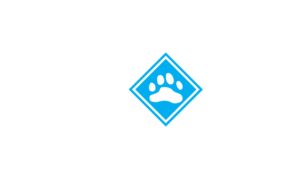One of the most popular questions we get here at the Catamount Trail Association is: What type of equipment is required to ski on the Catamount Trail? You’d think this would be an easy question to answer.
What kind of equipment… backcountry ski equipment! If only it were that simple.
The world of backcountry skiing can be a confusing one. This is because the phrase backcountry skiing can encompasses so many different types of activities. It doesn’t matter whether you use AT (alpine touring) or telemark equipment, XCD skis or skinny classic skis… all of these activities and types of gear fall under the backcountry skiing umbrella.
However, we are not here to have a discussion about the variety of equipment you COULD use to explore the back woods during the winter. We’re here to make some general equipment recommendations that would be appropriate for use on the Catamount Trail (CT).
Now, let’s further tighten up our constraints a bit more. Let’s pretend that we are shopping for someone who plans on skiing the CT from end-to-end. If attempting all 31 sections of the Catamount Trail you will encounter some areas that are pretty mellow and some are pretty challenging. The recommendations below take all of this into consideration.
Recommended Ski Equipment
Skis
For skis we would recommend one of the many medium-sized, metal-edged skis with a waxless base. These skis are often referred to as XCD (cross country downhill) skis and examples of this type of ski are the Madshus Epoch or Annum, the Fischer S-bound 98 or 112, or the Rossignol BC 90 or 110. You can go slightly bigger or slightly smaller than the skis mentioned above, but as long as the skis have a metal edge and a waxless base you should be ok. Narrower skis with less shape will tour better, be faster on the flats, and easier to haul up the climbs. However, you typically give up some downhill performance. The larger skis are more work on the uphills, but typically have more shape and are easier to control on the downhills. The skis recommended above fall in the middle of the pack and provide a good mixture of touring and downhill performance perfect for tackling the variety of conditions and terrain found on the Catamount Trail.

Boots
For boots we would recommend a lightweight 3-pin boot like the Rossignol BCX12, the Scarpa T4, or the Garmont Excursion. You could also use an NNN BC or SNS BC boot, but these setups are generally regarded as providing less control than 3 pin systems. Also, there is a much broader range of 3 pin compatible boots on the market. This means you could have one set of skis and bindings, but have a lightweight boot for touring on easier terrain and a heavier boot that offers more control when attempting something more challenging.

Bindings
Here again we would recommend a 3-pin binding, specifically the Voile 3 Pin Cable or 3 Pin Hardwire. Both of these bindings can be used with or without the heel bail. So, if you crash and tear the pins out of your boot you can continue just using the cable. Or… if you break a cable you can just use the 3-pin toe piece. This redundant retention system makes these bindings great for any backcountry outing. NNN BC and SNS BC bindings are also used with much success on the Catamount Trail. However, again this typically comes at the cost of some control… though they do tour very well. Regardless of which system you choose, always be sure to carefully inspect the condition of your bindings before a tour to reduce the potential for having a failure while out on the trail.

Climbing Skins
We would definitely recommend climbing skins for certain sections of the Catamount Trail. Climbing skins are accessories that go the bottoms of your skis to provide additional traction. There are sections with a significant amount of climbing and having climbing skins available for the steeper and more sustained aspects will help you move more quickly and efficiently by reducing the need to sidestep or herringbone. That said, climbing skins are not necessary for every section and if you are just starting out this is not something you will need right away.

Kicker Skins
Kicker skins are partial length skins that attach under the ski and run from just in front of the binding to slightly behind the boot. They are about as long as the waxless pattern on most no-wax skis. They do not provide nearly as much purchase on the way up, but they do offer more grip than most waxless patterns and they help maintain some glide. Kicker skins are great for rolling terrain and for someone willing to give up some grip in an effort to keep things light. Again this is another piece of equipment that isn’t necessary, but might warrant your consideration.
Hopefully this will help get you started. Please keep in mind that these are just guidelines and that there is no right or wrong equipment for skiing on the Catamount Trail. We want to you have fun and that means not suffering too much on the flat and uphill sections, and having enough control on the descents to not freak yourself out. Please take every equipment recommendation with a grain of salt, ask questions, talk to as many people as possible, and build your own opinions. Only you can decide what’s right for you.
Think Snow!









